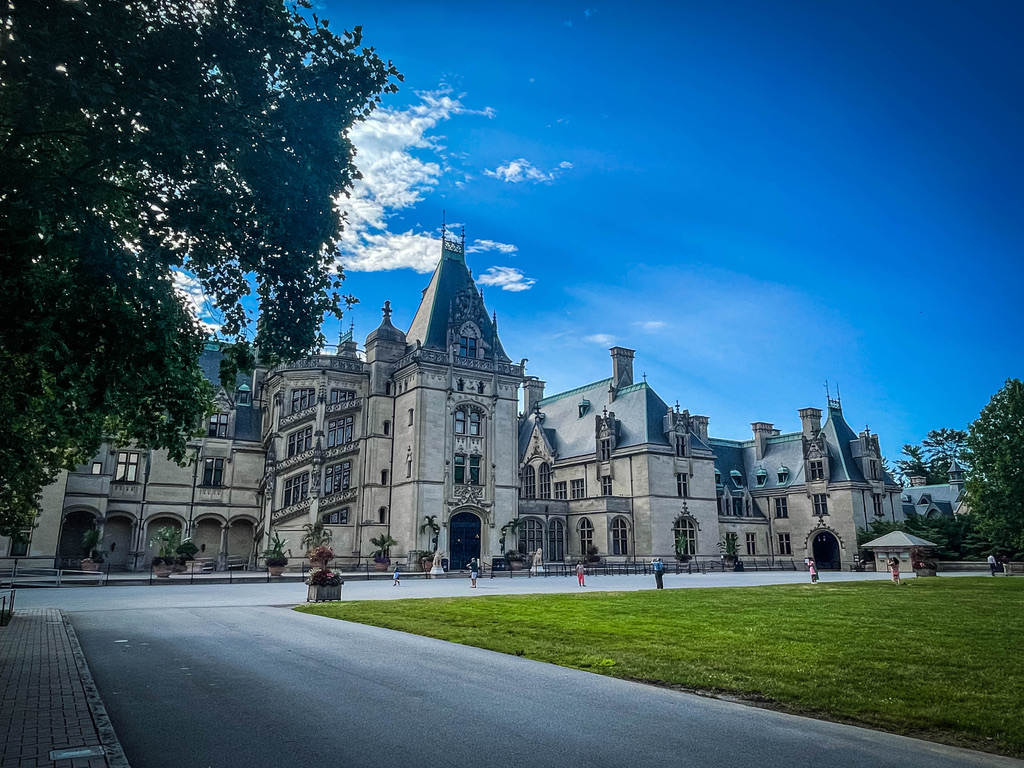
Since our trip to Lake Lure was calling for rain the whole weekend, we had to fall back on an indoor activity – and what more glorious than the largest residential home in America, the 175000 square foot Biltmore Estate. With 250 rooms to explore, I knew it would keep us occupied no matter what the weather!

We arrived shortly after lunchtime, and reserved the next available slot for touring the home, 3:15. This gave us a few hours to explore the grounds, including the “Antler Village” which is 45 minutes away (but still ON THE PROPERTY). When we arrived at Antler Village, I chose to park next to a beautiful hydro-blue Rubicon and gifted them a duck.
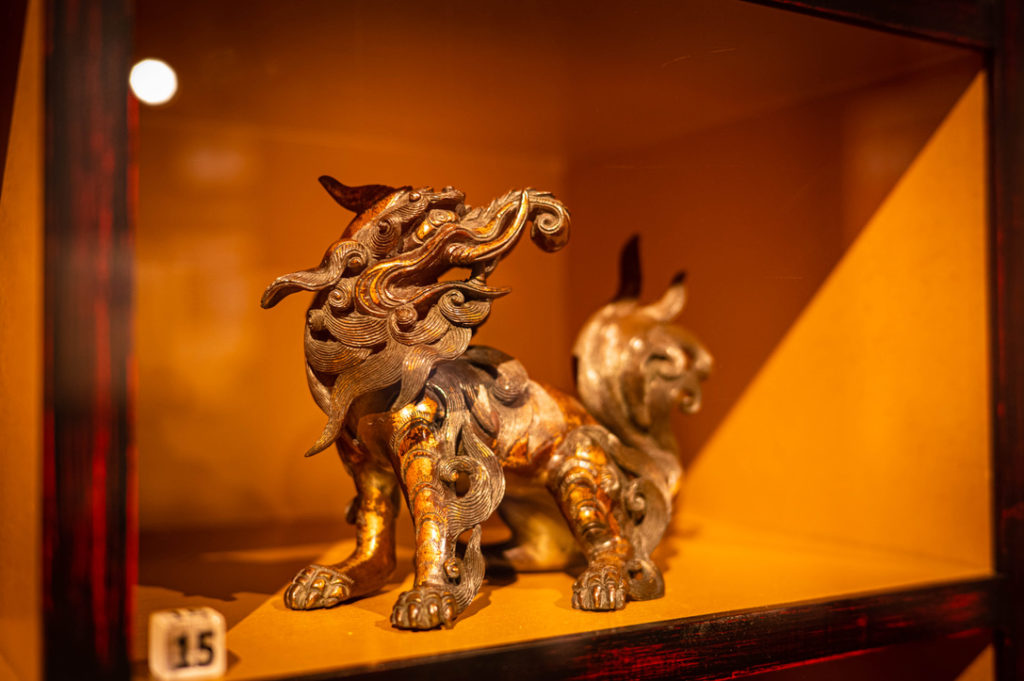
Antler Village features several small shops, dining establishments, and a self-guided museum. I think exploring the museum before visiting the house is beneficial, because you get an opportunity to learn a bit more about George and Edith Vanderbilt, why Biltmore was built, and what kind of art collections and historical pieces you can expect to find in the home.
Antler Village also features the “Biltmore Gardens Railway – Wonders of the World” which is a small botanical garden featuring several miniature models of “Wonders of the World” created from natural elements, like sticks, twigs, leaves and mud. They were really interesting to see, especially with several model trains roaming around. I imagine it is quite the hit with the kids!
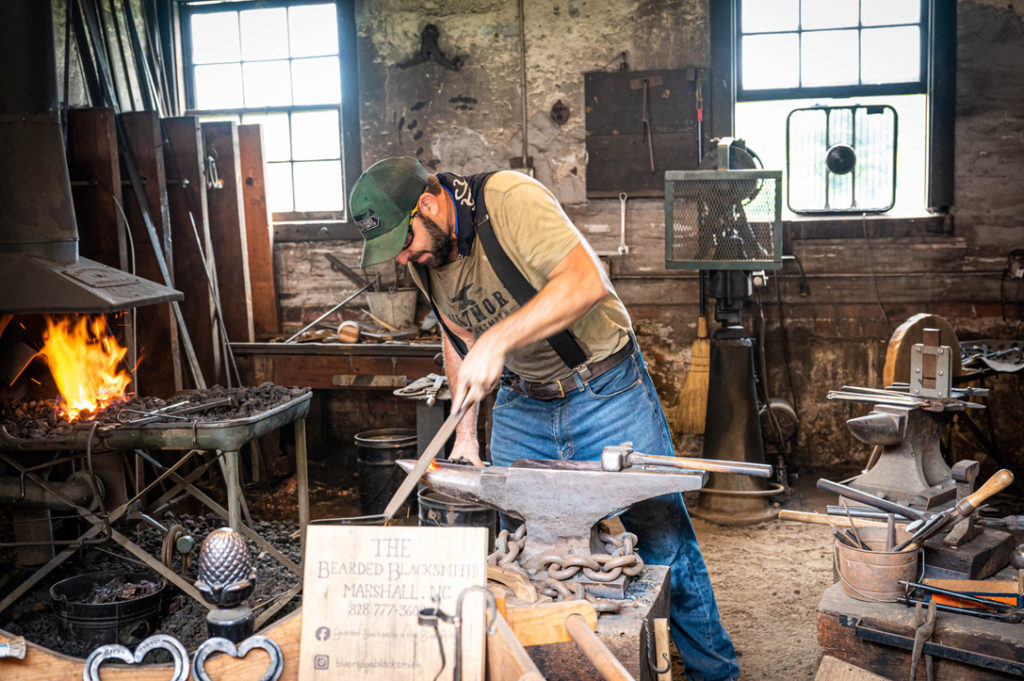
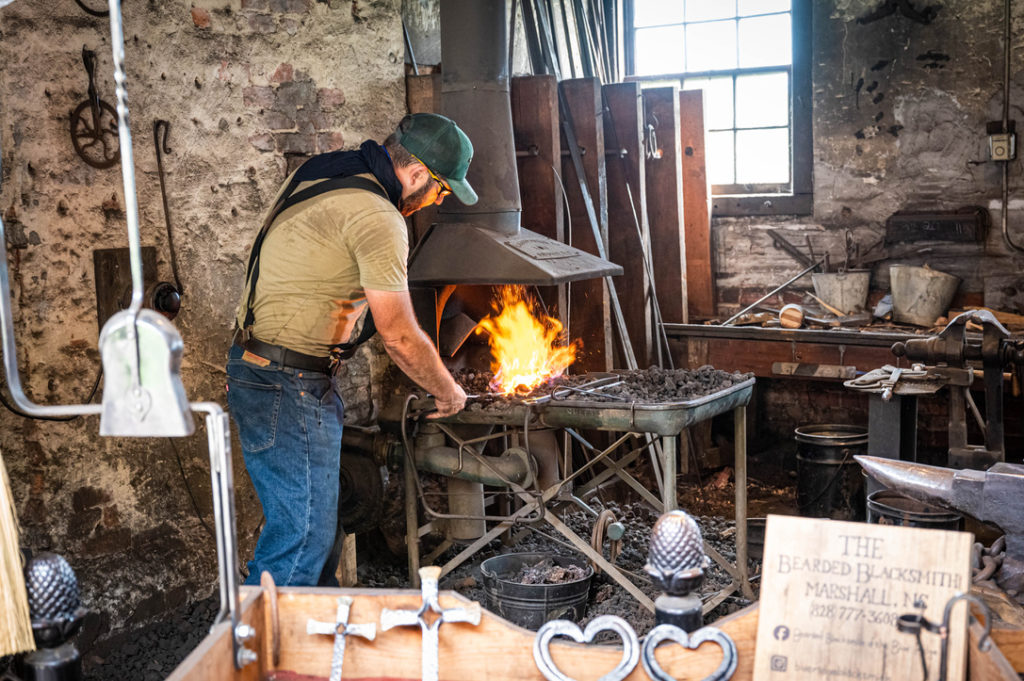
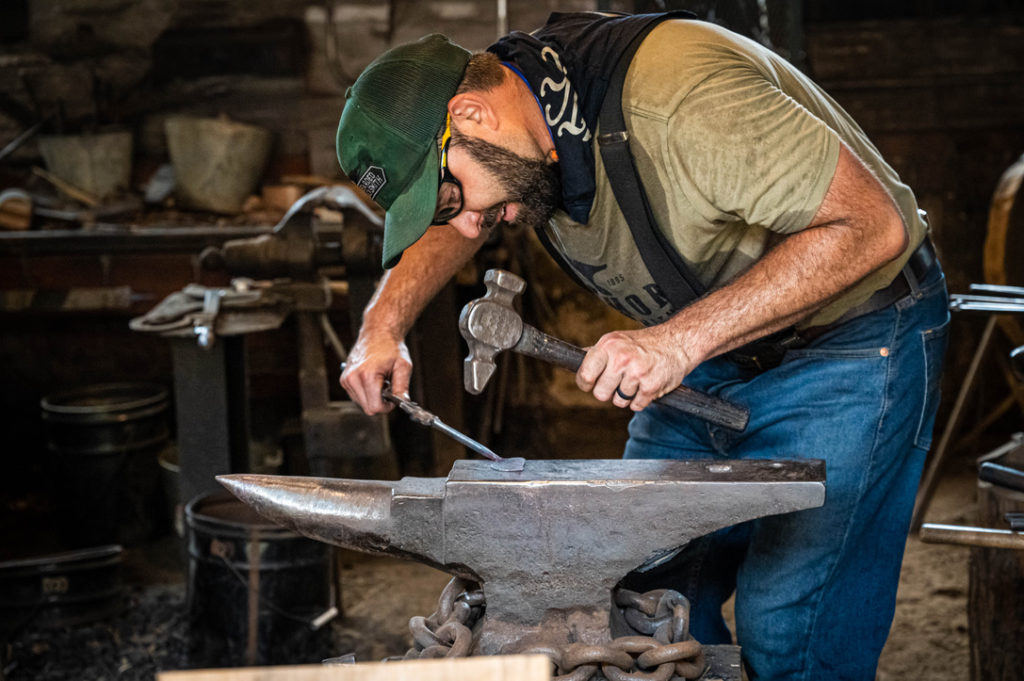
We continued our tour of Antler Village to the historic barn, where there are a few shops and historical markers, as well as a blacksmith. On our visit, we met the Bearded Blacksmith of the Blue Ridge, a very personable fellow with the heart of a teacher, eager to share his passion for the trade. He crafted a leaf keychain from a piece of iron, which my mom purchased as a memento. As we finished up at the Blacksmith shop, my alarm on my phone went off – time to make the 45 minute drive over to tour the house!
We parked in Lot C and took the shuttle, though you can also Park in A or B and make a 10 minute walk to the house. We enjoyed the shuttle trip, and they dropped us off literally at the front door.
We joined a short line of other guests waiting for their timed entry, admiring the gorgeous architecture as we waited. There are so many details of the house on the exterior that you have to be close to really appreciate. The pair of lions that await just outside of the giant arched doorway have been with the Biltmore since the day it opened. They are made of an exquisite Italian rose marble, and they each have soft, kind expressions.
Another feature of the exterior that I really love are the numerous gargoyles and grotesques on every corner. You can see them looking down from the roof with their long outstretched necks, a nod to the European inspiration that the house draws upon.
Even the gorgeous limestone fascade begs for closer inspection. As you approach the home for your interior tour, you can see the limestone has an magnificent texture, painstakingly carved by individual craftsman with a process called crandalling. This texture lends the house a stately glow, but make it have less glare than unaltered limestone.
Once within the home, you can pick up an audio tour device and begin your journey through the home. Significant areas are marked with small numbered plaques, and upon entering the number into your audio tour device and holding it to your ear, you can hear detailed information about that particular item or room. The first room on our tour was the Winter Garden, my absolute favorite room of the house.
I am a houseplant lover, and I can only dream of having access to this kind of room to house my collection! The beautifully crafted skylight lets in a flood of beautiful natural light, displaying the many gorgeous tropical plants on display, as well as some fine pieces of art. The marble floor of the Winter Garden actually conceals access to the “Potted Plant Storage Room” below, allowing for the plants to be rotated in the Winter Garden without carting the large plants through the main house.
The Biltmore was established on a tradition of deep hospitality, and many of its guest stayed for an extended time, so it was important that there were plenty of indoor and outdoor activities to partake in. The Billiard Room was one place where guests (and hosts!) could retreat to play pool, carom, chess, dominos, or other games of the times. While this space was often frequented by the men of the home, women were also welcome here- however, there are two doors within the Billiard room that lead to the bachelors wing where women were not permitted.
One of the most impressive rooms of the Biltmore is the Banquet Hall, with 70 foot ceilings and a triple fireplace. This room could entertain up to 68 guests, turning dinner into a multi-hour entertainment spectacle. My favorite feature of the room is the enormous 1916 Skinner pipe organ which sometimes plays haunting melodies that you can hear throughout the house.
With such a stately Banquet Hall, there is also a more “modest” Breakfast Room for serving both breakfast and lunch. By the standards of the time, it was more relaxed dining, though by todays standards it is still quite refined. I can only imagine this type of setting in our finest dining establishments. I guess slipping off to the refrigerator to stuff your face with cheese is a modern convention.
No matter where you are in the Biltmore, I think the best features are the tiny details – the things that blend into the background, but were painstakingly crafted to lend themselves to the overall lavishness. These details are something that you don’t find in many modern constructions. For example, every room of the home has an absolutely beautiful ceiling, detailed and unique. No popcorn ceilings to be found here!
Another detail I paid special attention to is the ironwork. Having just visited the blacksmith, he told us to pay special note to the iron inside the house, and how refined each piece is. He said it takes an incredibly skilled blacksmith to complete each piece, and when something in the home breaks, it takes a team of skilled artisans to restore it to its previous glory. There are no simple pieces of art within the Biltmore!
The first time I visited Biltmore was in the dead of winter, which was a unique experience with snow covering the grounds, but I missed out on a lot of the outdoor features. On this visit, it was a hot and sunny summer day, so we got to explore some of the outdoor terraces that showcase the spectacular view. These were the views that enchanted George Vanderbilt, and he declared he wanted to own everything within his sight, which included Mount Pisgah. He eventually succeeded- Biltmore was 125,000 acres, or 195 square miles. When he died unexpectedly in 1914, Edith honored his wishes to sell 87,000 acres to the federal government under the condition that it remain pristine, and Pisgah National Forest was born. It is of particularly importance as it is one of the first national forests in the eastern United States, and is also the birthplace of the US Forest Service. During his life, George had begun the Biltmore Forest School under the direction of Carl Schenk, a renowned German forester and educator. Many of the forests on Biltmore were in decline when the land was purchased, and George wanted it to be restored to its natural vitality using comprehensive training and science.
Returning inside you proceed through the Tapestry Gallery which contains some of my favorite pieces of art. On each of the interior walls hang three enormous tapestries, part of a set referred to as “Triumph of the Seven Virtues”. They were created in Flanders (now part of Belgium) between 1525 and 1535 from wool and silk, and each took over five years to plan and complete. Multiples of each were created, but over the centuries many have been lost. For example, there are no remaining examples of Triumph of Temperance. The three which are house at the Biltmore are Prudence, Faith and Charity.
I also adore the decor chosen for the mantles and fireplaces in the tapestry room, and the photos that adorn each of the side-tables. I imagine this was a wonderful place to quietly socialize or curl up with a good book from the next room, the Library.
If Winter Garden is my favorite room, the Library is my close second. During his lifetime, George was an insatiable reader, eventually amassing a collection of over 24,000 books in eight different languages. He documented each book that he read starting at the age of 12, so we know that he read at least 3159 book, an average of 81 books each year. As all bibliophiles, his pile of “to read” was far greater than his ability to reasonably read them all!
There are two things that I love particularly about the beautiful library. First, it has a second story entrance that allowed guests of the house to slip in and grab a book before retiring to their bedroom in the evening. This allowed the ladies of the house to be able to exchange reading material in their evening attire without having to get fully dressed in their full formal attire, something they would have to do if they were to have to use the main area of the house.
The second thing I love is the door with St. Peter on it which conceals a small den where George could retreat and quietly read. This room is isolated from the rest of the house and nearly soundproof, a perfect little hideaway where we all would love to curl up with a good book.




If you continue your tour to the lower levels of the house, you will find the rooms where provide the lifeblood to the entire house. Even though the basement and sub-basement are deep underground, they took special care to make the passageways as tall, wide and airy as possible, as these areas of the house were still frequented by both staff, hosts and guests.
There are several important entertainment areas in the basement, including two bowling lanes. Biltmore was one of the first private residence to feature a bowling alley, and since auto-resetting pins and ball-returns had not yet been invented, they were manually reset by a servant.
Not to be overshadowed by the bowling alley, the pool was also a beloved feature of the basement. This 70,000 gallon heated pool also featured indoor lighting, a novelty at the time. It also had call buttons that you could access from the water so that a guest could indicate when they were done swimming and needed assistance back to the dressing room to change back into their formal attire, as it was inappropriate to be seen anywhere other than the pool in bathing attire.
The sub-basement is contains several rooms which were critical to the functioning of the household, such as several kitchens, a walk in refrigerator, dry storage and pantries, several laundry rooms including a washing machine, servant dining, a few servant quarters, and the potted plant room attached to the Winter Garden above. I loved the copper pots hanging in the kitchen, which are the originals from the house.


Once we finished our indoor tour, we made our way out onto the pergola, which is draped with huge wisteria vines. I can only imagine how dreamy this space is when they bloom!
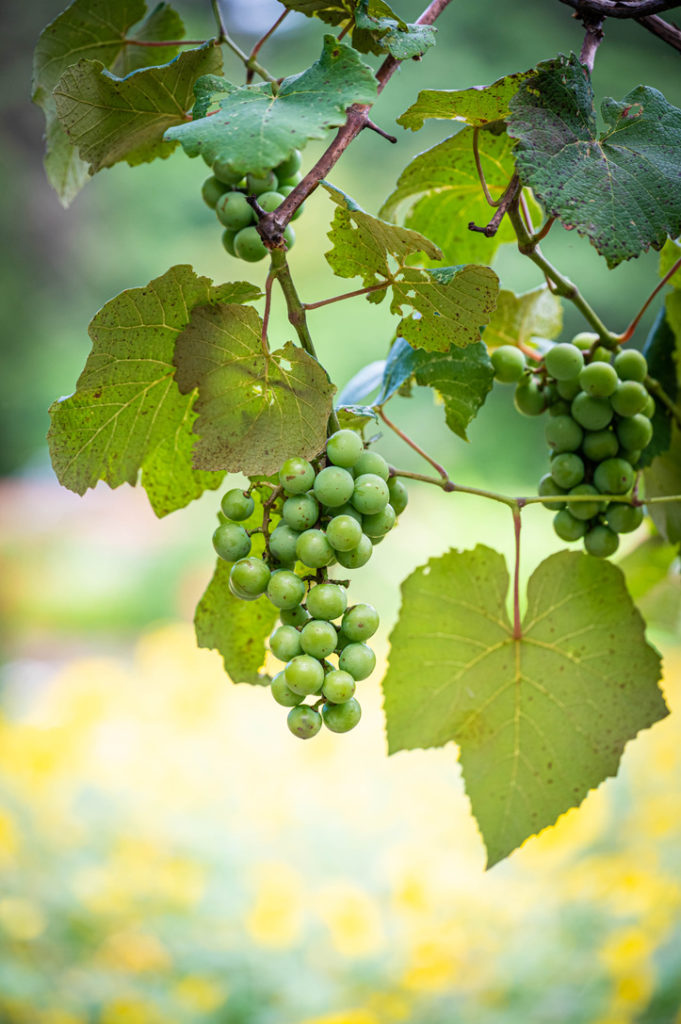
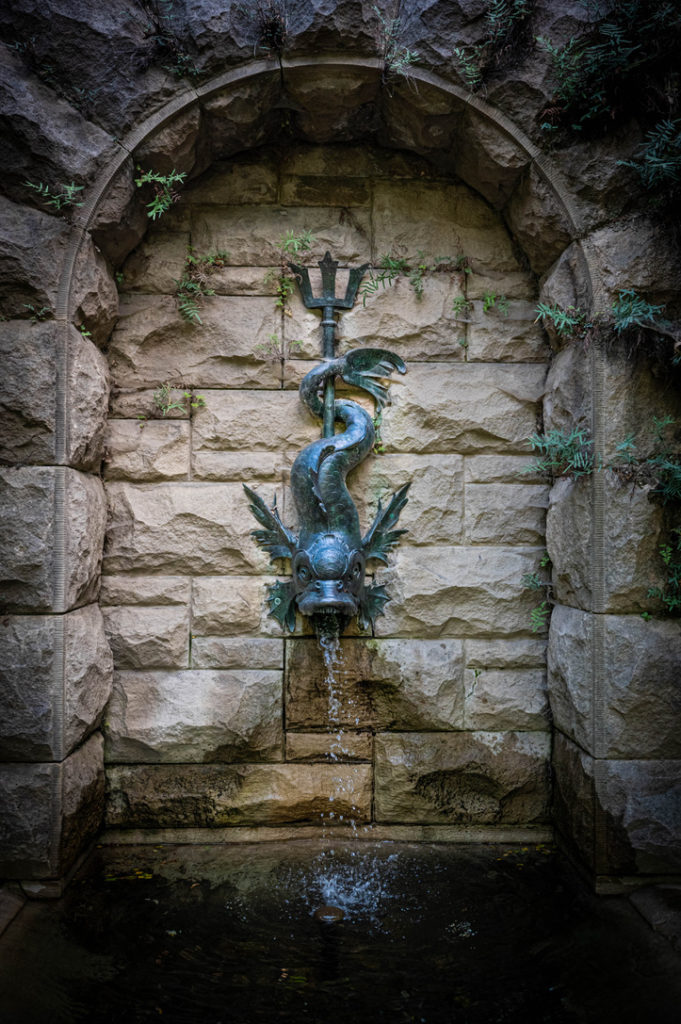
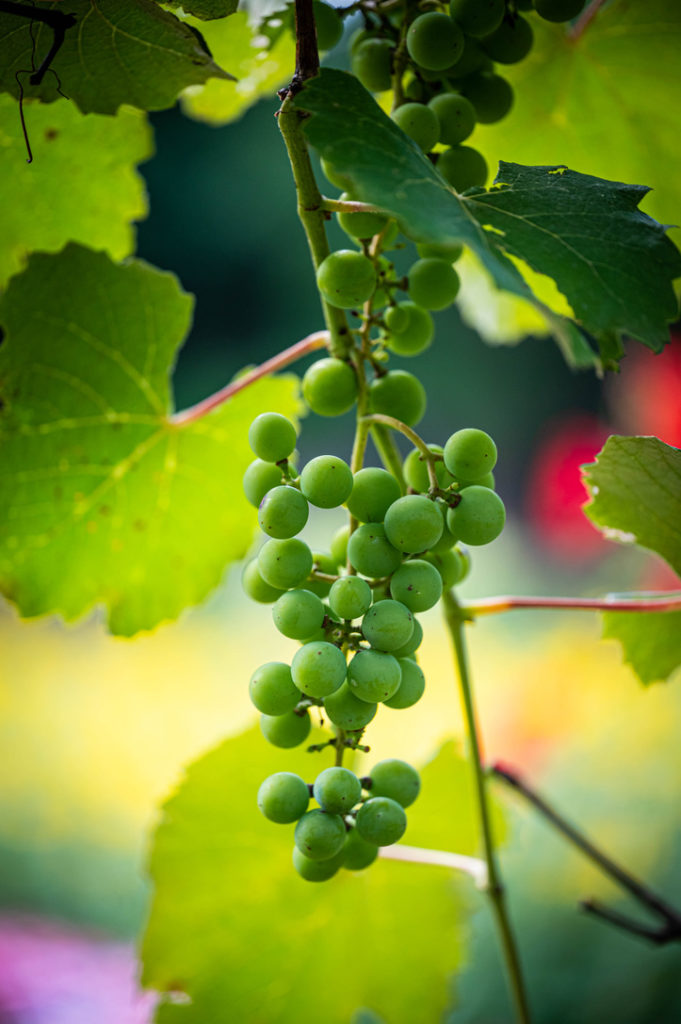
Our visit was quickly drawing to a close as the estates closing hours neared, but we had about an hour to explore the outdoor gardens and conservatory. NOT ENOUGH TIME! I will definitely be making another trip back to the estate just to explore the outdoor gardens! They rival some of the best that I’ve seen. I loved the walled gardens with the intermittent pieces of art scattered throughout, and the hanging grape vines that grow over some of the paths.
I imagine that the conservatory housed many exotic tropical plants that would be featured in the Winter Garden during the dreary winter months. Conservatories are some of my favorite garden spaces, always featuring my favorite orchids. I am enchanted with the different colors and textures that tropical plants provide.








There is no shortage of variety in the gardens, every inch of space specially curated for interesting colors, textures and scents. Im sure the gardens require a multitude of employees who constantly weed, trim, plant and nurture the seasonal plants on display.
Once our visit ended, we were all absolutely famished and headed for one of my favorite Asheville restaurants, Tupelo Honey. I love this place for its delectable southern fare, but my favorites are the flash-fried brussell sprouts, potato cracklins, and Chicken & Waffles. Im not sure any trip to Asheville would feel complete without it!
I hope that you’ve enjoyed virtually visiting the Biltmore with us, and I hope you have the opportunity to visit it in person someday soon! No matter what time of year, it never disappoints, and is definitely worth the hefty price of admission.




































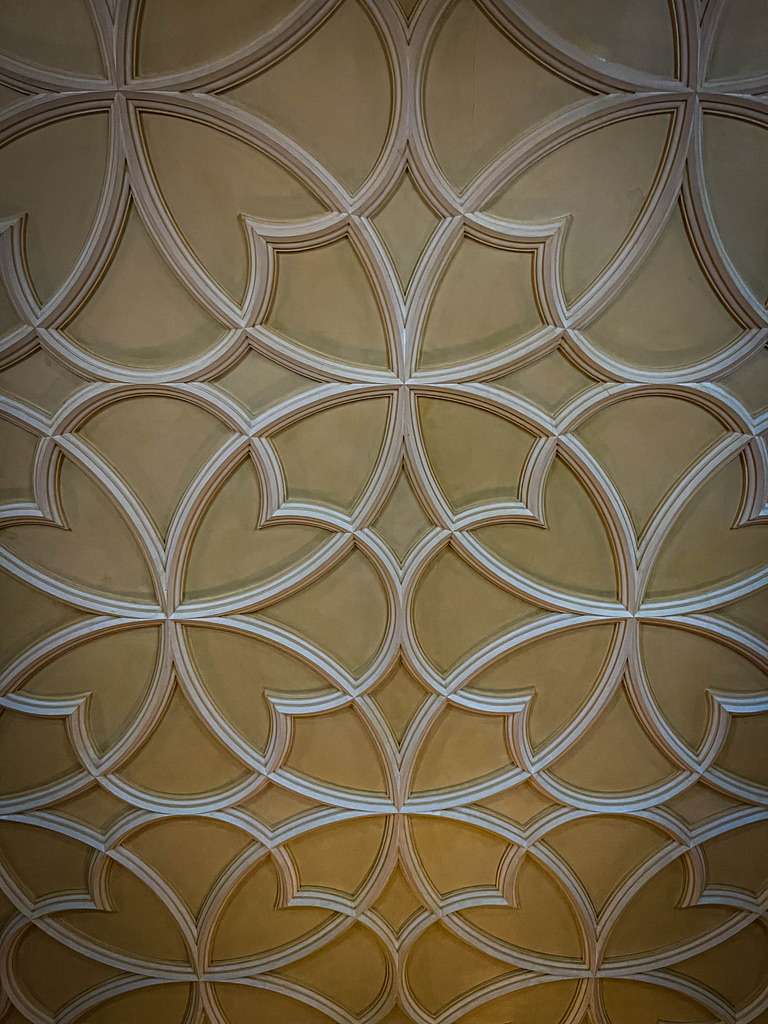






















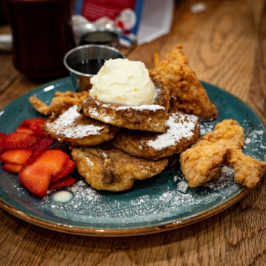
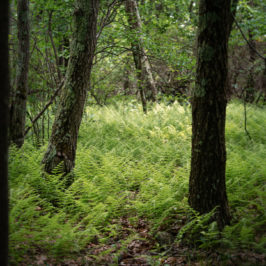
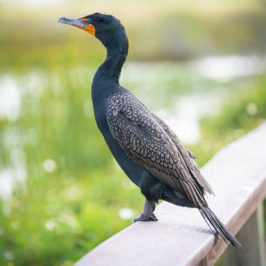


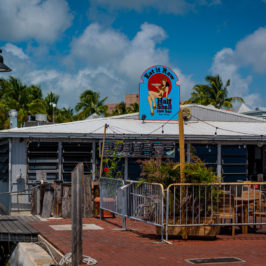
Leave a Reply